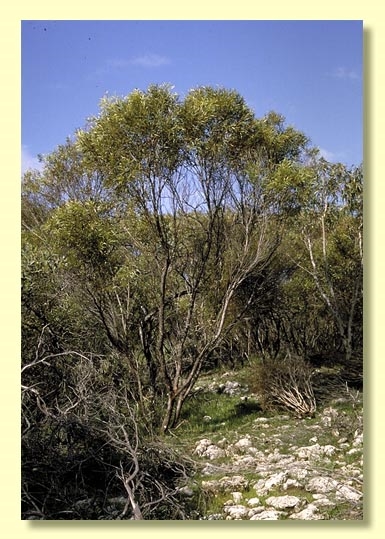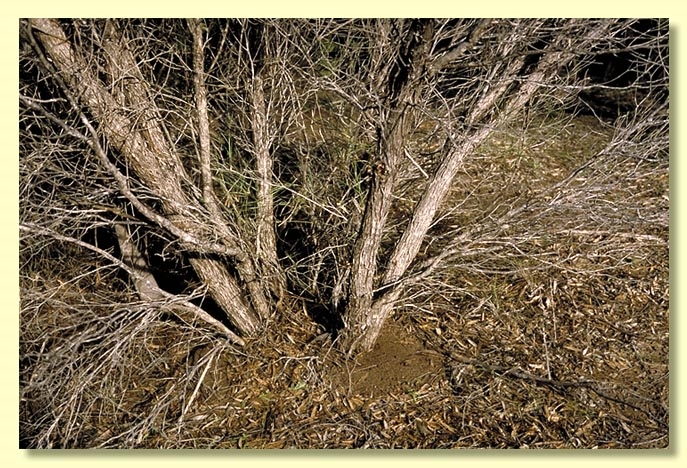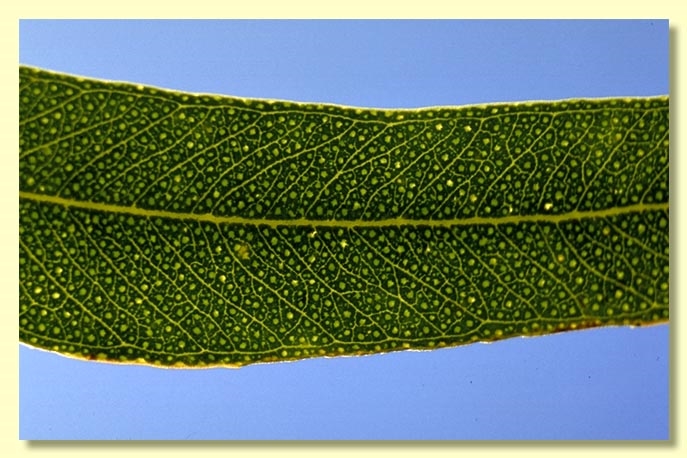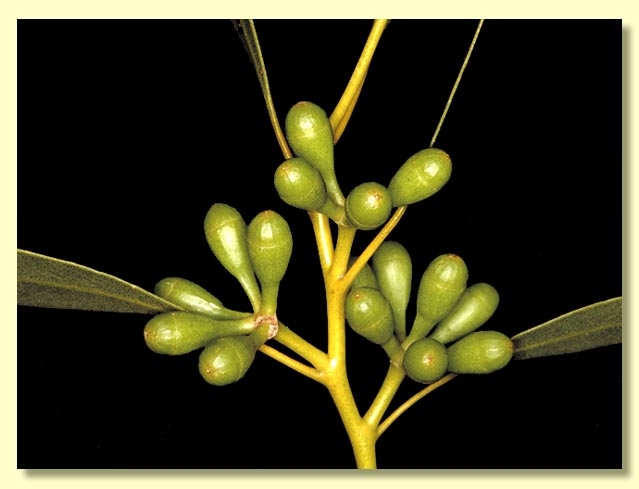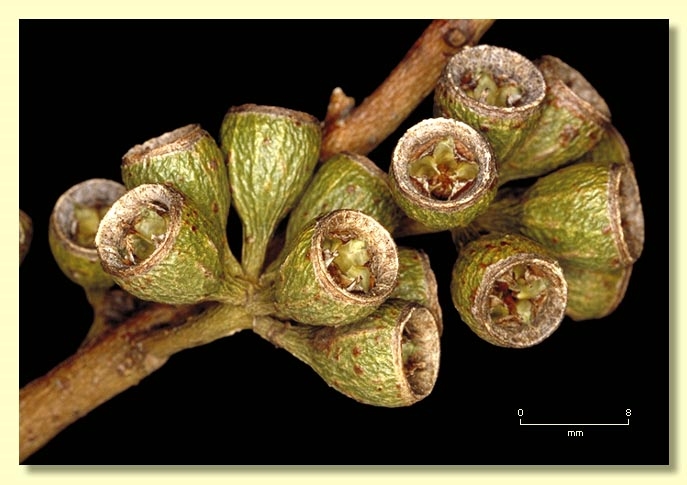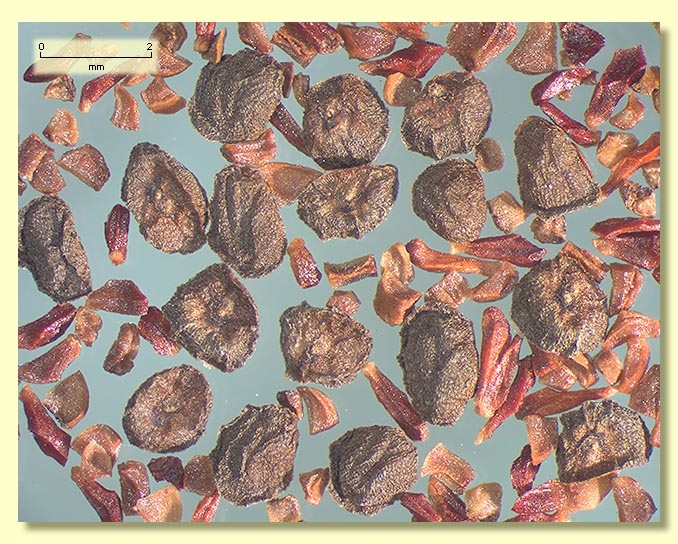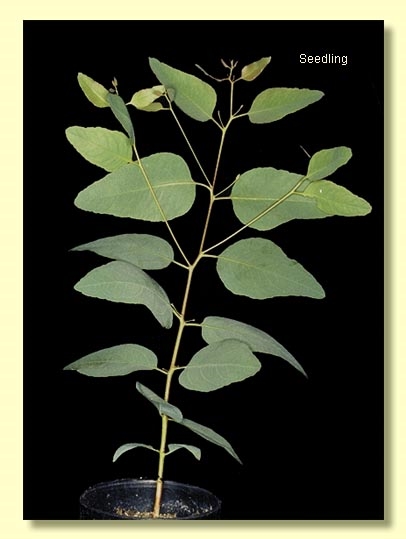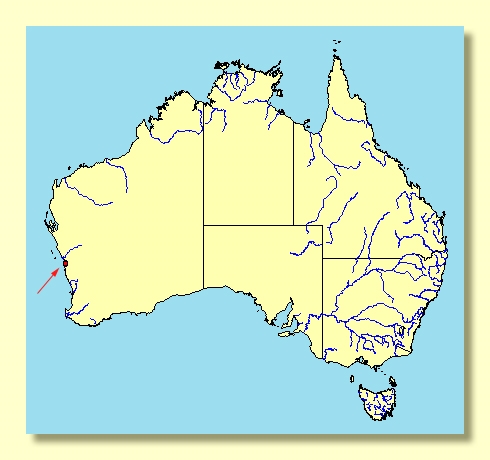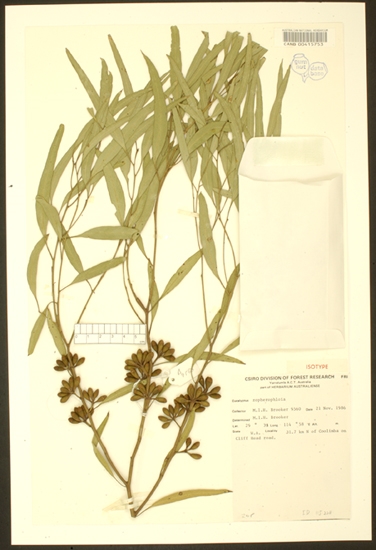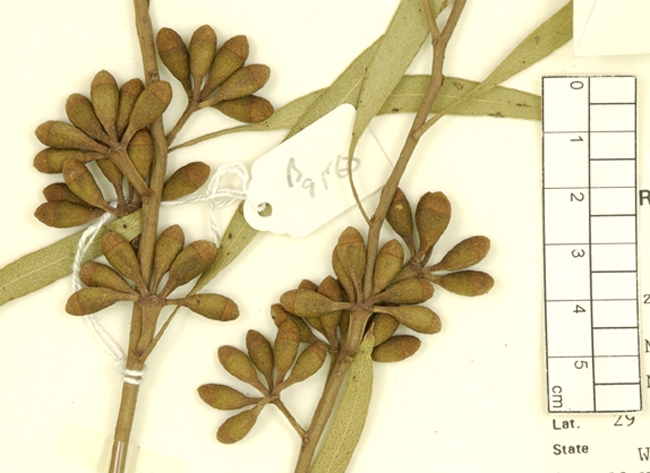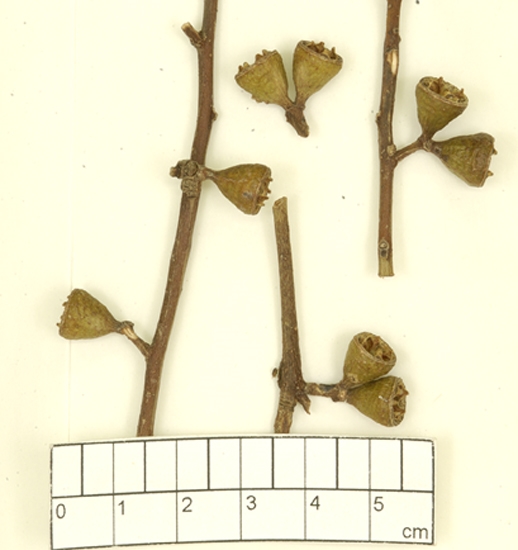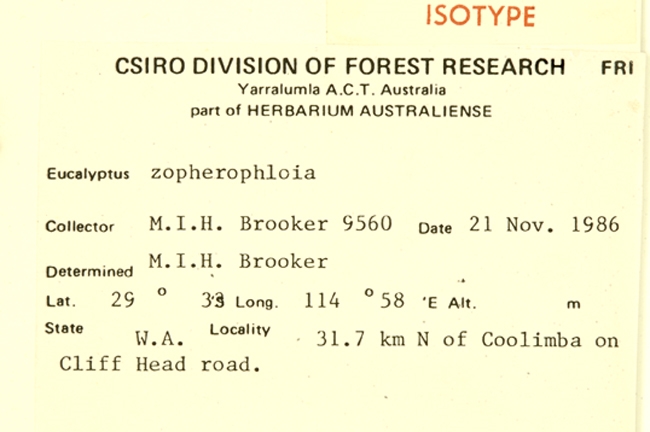Euclid - Online edition
Eucalyptus zopherophloia
Eucalyptus | Symphyomyrtus | Bisectae | Glandulosae | Accedentes
Bark rough over part or all of trunks, fibrous, firm, grey to grey-black, smooth grey over light creamy grey above.
Branchlets have oil glands in the pith.
Juvenile growth (coppice or field seedlings to 50 cm): not seen
Adult leaves held erect, alternate, petioles 0.5–1.7 cm long; blade narrowly lanceolate to narrowly elliptical, 4.5–10.3 cm long, 0.5–1.3 cm wide, base tapering to petiole, margin entire, apex pointed, concolorous, dull to slightly glossy, green, side-veins at an acute or wider angle to midrib, reticulation moderate to dense, intramarginal vein close to margin, oil glands island and intersectional.
Inflorescence axillary unbranched, peduncles flattened to rounded, 0.4–1.5 cm long, buds (?7), 9 or 11, pedicellate (pedicels 0.1–0.4 cm long). Mature buds ovoid to obovoid (0.7–1 cm long, 0.4–0.5 cm wide), scar present, operculum rounded, stamens inflexed, anthers oblong, versatile, dorsifixed, dehiscing by longitudinal slits, style long and straight, stigma blunt, locules 4, the placentae each with 4 vertical rows of ovules. Flowers white.
Fruit pedicellate (pedicels 0.1–0.3 cm long), obconical, 0.6–1 cm long, 0.6–0.9 cm wide, disc descending, valves 4, rim level or slightly exserted.
Seeds brown to grey-brown, 1–2.5 mm long, flattened-ovoid, dorsal surface shallowly reticulate, a narrow encircling marginal flange often present, hilum ventral.
Cultivated seedlings (measured at ca node 10): cotyledons Y-shaped (bisected); stems square to rounded in cross-section, slightly warty; leaves always petiolate, opposite for 5 or 6 nodes then alternate, ovate to lanceolate, 4.5–8 cm long, 2.5–5 cm wide, dull, grey-green to green, upper leaves becoming greener and slightly glossy.
Flowering has been recorded in January and August.
A mallee endemic to the Indian Ocean coast of Western Australia where known from Jurien and Dongara, north to Zuytdorp Cliffs and Tamala. It is found on sand over limestone. The bark is rough and tightly held to the stems and the adult leaves dull to slightly glossy, light to dark green, smooth glossy ovoid buds with inflexed stamens, and the fruit obconical with valves usually about rim level when dehisced. These features distinguish Eucalyptus zopherophloia from other mallee species occuring in the area.
The following related species are found in the coastal and subcoastal areas north of Perth to Exmouth and may be more difficult to distinguish from E. zopherophloia. The rare E. leprophloia has much looser rough bark, glossy green leaves, more cupular to barrel-shaped fruit and occurs on loamy soil below a lateritic breakaway inland from Jurien; also rare E. pruiniramis has some rough bark when a tree or is smooth as a mallee, has glaucous branchlets, dull adult leaves and is found further inland and south from Three Springs on gravelly soils. E. baiophylla occurs to the north of the distribution of E. zopherophloia on low country from southern Exmouth Gulf to Waroora and differs in having narrower juvenile leaves (ovate juvenile leaves in E. zopherophloia ) and fruit with more exserted valves. E. prominens is a mostly smooth-barked mallee restricted to the elevated coastal limestone Cape Range near Exmouth and has glossy leaves and larger obconical fruit with exserted valves. E. accedens is the most widespread of the related species, occurring to the south of E. zopherophloia, differing by its tree habit, smooth powdery bark and a dull blue-green crown.
Eucalyptus zopherophloia belongs to Eucalyptus subgenus Symphyomyrtus section Bisectae subsection Glandulosae because the cotyledons are bisected, buds have an operculum scar and the branchlets have oil glands in the pith. Within this subsection E. zopherophloia belongs to a small subgroup of nine species, series Accedentes, further characterised by having buds with inflexed stamens, ovules in four rows and juvenile leaves petiolate. The species are E. accedens, E. laeliae, E. leprophloia, E. trivalva, E. pruiniramis, E. zopherophloia, E. prominens, E. baiophylla and E. pilbarensis.
There are populations of low mallees on the Peron Peninsula (Shark Bay area) which are probably E. baiophylla (rather than E. zopherophloia) but further investigation is needed, particularly the growing of seedlings to check leaf shape.

